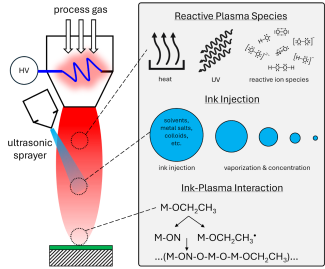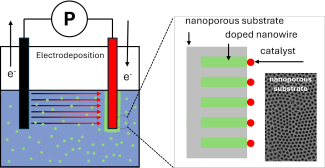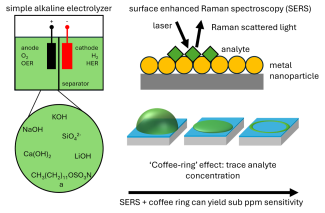Research
Overview
We develop compositionally complex thin films and nanomaterials using advanced manufacturing — solution processing, electrochemical synthesis, and atmospheric-pressure plasma methods — paired with high-throughput exploration. By engineering atomic-scale structure and chemical disorder, and probing materials with electron microscopy, x-ray scattering, and spectroscopy, we uncover the structure–property relationships that enable new performance regimes. Our application focus includes sustainable energy, clean chemical production, and materials for extreme environments, ensuring our discoveries are both fundamental and impactful.

Spray Plasma Processing of High Entropy Oxides
Spray Plasma Processing (SPP) combines the versatility of traditional solution processing techniques—such as spin-coating, spray-coating, dip-coating, and blade-coating—with the scalability and molecular-level control offered by atmospheric pressure plasma processing. In SPP, an ink of virtually any composition—ranging from metal salts to colloidal suspensions—is injected directly into an atmospheric pressure plasma discharge. By precisely controlling the ink and plasma chemistries, we can design and synthesize metals, oxides, polymers, and nanocomposite thin films with tailored properties.
Our current research focuses on using SPP to develop high entropy oxides (HEOs), an emerging class of materials that incorporate five or more cations into a single oxide lattice. These materials exhibit a remarkable range of properties, making them highly promising for applications such as oxygen reduction catalysts and advanced hydrogen barrier coatings. The high throughput and scalability of SPP uniquely position us to explore the vast compositional space of HEOs, overcoming one of the greatest challenges in leveraging their potential for real-world applications.

Electrochemical Synthesis of Hydrogen Evolution Catalysts
Electrochemical synthesis (e.g., electroplating) is a highly scalable yet underutilized method for producing nanomaterials and nanocomposites. In our work, we harness these techniques to develop advanced hydrogen evolution catalysts, addressing critical challenges in catalyst stability and performance. A key focus is the design of single-atom catalysts supported on embedded nanowires. This innovative approach not only prevents catalyst agglomeration—a common issue that diminishes catalytic efficiency over time—but also enhances the mechanical properties of the system by integrating the catalysts into a robust nanocomposite structure.

Electrolyte Speciation for PEM and Alkaline Electrolyzers
Our lab is investigating electrolyte speciation in PEM (proton exchange membrane) and alkaline electrolyzers using Surface-Enhanced Raman Spectroscopy (SERS). Understanding the speciation of ions and intermediates within these systems is critical for improving their efficiency, stability, and performance. By leveraging the high sensitivity and molecular specificity of SERS, we aim to gain deeper insights into the dynamic interactions at electrode-electrolyte interfaces. This knowledge will guide the optimization of electrolyzer designs and operating conditions, ultimately contributing to more efficient hydrogen generation technologies.
